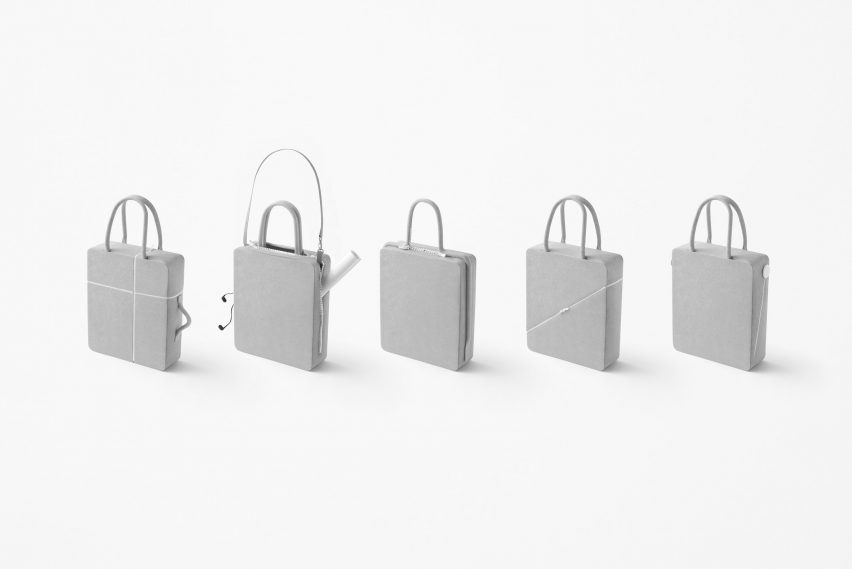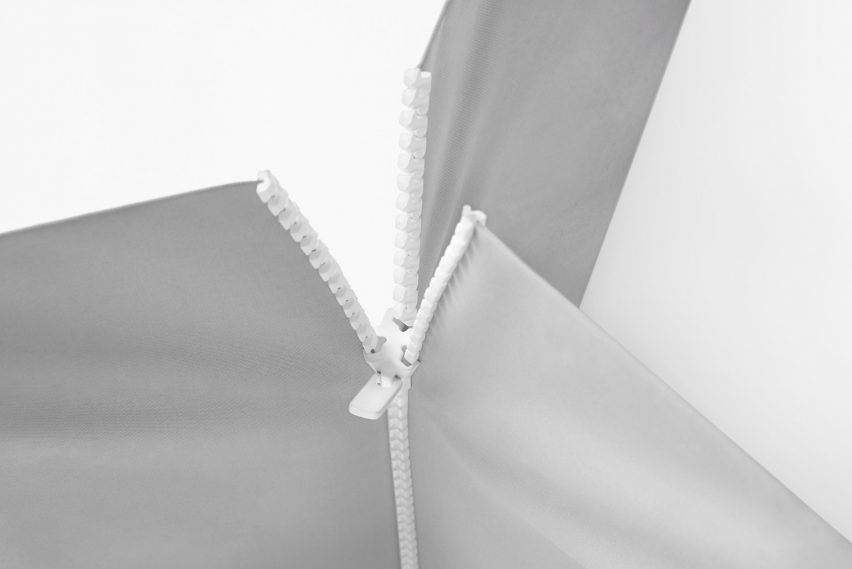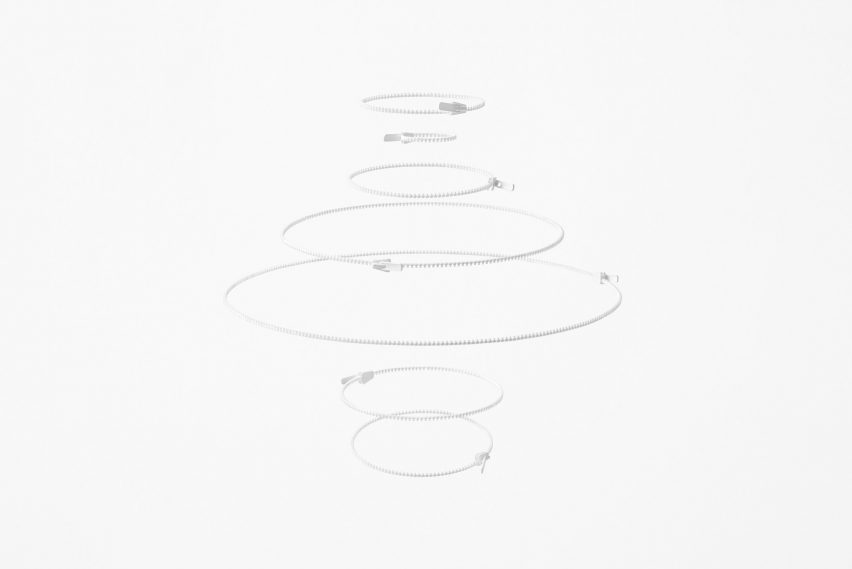Nendo designs five alternatives to the standard zipper
Tasked with reinventing the zipper, Nendo has come up with five different fastenings, each designed to suit a different function.
The Zippppper project saw Nendo team up with fastening manufacturer YKK to examine the interlocking teeth of a traditional zip, to see if they could be reimagined.

"In lieu of focusing on superficial finishings or decorations, it was important to take a step back and delve into the fundamental question, 'what exactly is a zipper?'" said the studio, which is led by Oki Sato.
"The basic concept of a zipper is to open and close the opening between two pieces of material without any gaps, but by thoroughly assessing each component individually and through further reassessment – five new zippers were created."

The first of these five iterations is designed to cross over at a right-angled intersection, enabling the zipper to be opened both lengthways and widthways.

With the second design, Nendo wanted to retain the functionality of a zip, but give users more flexibility. The studio devised a system that sees gaps created along the length of the zip, so that users can feed cables and cords through.

The third design enables users to easily operate zippers with one hand, without the need to pull the material taut.
This is achieved through a disc-like fastener, which incorporates a mechanism that – as it is pulled – rotates up along the side of the zip to clamp it together.

A fourth zipper allows three elements to be fastened together to create three-dimensional structures, while the final design negates the need for a start and end point.
The project's name, Zippppper, is spelt with five Ps to represent the five different approaches.

The past year has seen Nendo present a huge exhibition during Milan design week, and also complete its first landscape architecture project.
But as well as these large-scale projects, the studio has continued its relentless output of product design – most recently releasing a torch made from a single piece of paper, and a soy seasoning dispenser to rival the iconic red-topped Kikkoman bottle.